Gion Corner: The Simplicity of Japanese Musical Art
A show that’s produced for foreign tourists can be an insulting oversimplification of local culture, or it can be an interesting peek into that culture. I wasn’t sure which I was getting when I agreed to go to a performance by Kyoto Traditional Musical Art Foundation at a venue called Gion Corner, in the famous Gion district of Kyoto.
I’m still not sure what I got. Since I went to Gion Corner with another foreign tourist, and she didn’t know any more about it than I did, we missed the input of a local person to tell us how respectful and authentic it was. I can say, though, that one young Japanese woman, sitting in front of me with some foreigners, spent the entire hour-long performance with headphones in her ears, staring at her phone.
The performance was very simple and straightforward: no multimedia besides microphones and speakers, no fancy effects. Just one demonstration of a traditional art form after another. Before each one, a voice would explain, first in Japanese and then in English, a bit about what was coming next in a very straightforward, unsensational way.
Chado: tea ceremony
As we filed in, an older woman in a kimono was carrying out the ritual tea ceremony. According to the pamphlet I received as I entered,
This is the embodiment of the Japanese people’s intuitive striving for the recognition of true beauty in plainness and simplicity. Such terms as calmness, rusticity, gracefulness, or the phrase ‘aestheticism of austere simplicity’ may help define the true spirit of the tea ceremony.
That idea of beauty in simplicity certainly was evident in all the elements of these Gion Corner performances.
Koto: Japanese harp
Two kimono-clad women played a piece on these traditional harps. The music sounded simple and sweet, though watching them perform showed that these are not simple instruments to play.
Kado: flower arrangement
The woman who arranged flowers in a vase did each action in a very formalized, almost mechanical way, with no extraneous motion. While I’ve never seen flower arrangement as a spectator sport, it was interesting to see how she produced an asymmetrical, yet attractive, design. The pamphlet describes it as “suitably simple, natural, and symbolic arrangements.” I saw the simple and natural part, but I couldn’t really see any symbolism in the arrangement.
Gagaku: court music
This was my least favorite part of the Gion Corner performance. The man in costume was fun to watch, in that he did a series of stylized movements and poses, and his costume was just so fascinating.
The problem was the music that backed him. Apparently, “Gagaku” means “elegant music,” but to my untrained and probably terribly culturally-insensitive ear, it was awful: atonal, shrill, sometimes squeaky and sometimes hitting just the right high note to drive the sound into my skull, making me wince.
You might also enjoy these articles:
Kyogen: ancient comic play
This part of the show made me think they’re really not selling out to suit a Western audience. While this comic play included some rather slapstick elements, it also included a lot of dialogue, delivered in an over-the-top, staged way, at least to my Western sensibility. Given that most of the audience couldn’t understand it, respect for the tradition shows in their unwillingness to change it. The pamphlet we were given did have a summary of the plot, but unfortunately I didn’t think to read the pamphlet till afterwards!
Kyomai: Kyoto-style dance
I was most eager to see this part of the program: a dancing Geisha (actually, a Maiko: an apprentice Geisha). The dance was extremely formalized: a series of movements and poses, often slightly flirtatious-looking. I didn’t record it all, but the video below is the first two minutes of her dance.
While this does not strike me as an energetic dance—she didn’t get out of breath—it is very precise, down to the movements of her fingers and eyes. I suspect it took a lot of practice to reach that level of precision. It emphasizes again the simplicity and plainness that were/are seen as a virtue, but at the same time the amount of effort that goes into achieving that effect.
Bunraku: puppet play
To my Western eye, this was the strangest of the arts we witnessed. After all, while the puppeteers were able to manipulate the puppet very skillfully, they were fully visible the entire time! To me, that just spoiled the effect, even if they were covered in black cloth from head to toe. Not only that, the story that they were dramatizing, according to the information pamphlet, was a love story, yet the puppet play only showed the female character. The voiceover, entirely in Japanese, presumably explained the story, but it was odd to see the puppet go through such a series of movements without understanding what she was responding to.
The fact that each of these arts was demonstrated one at a time, simply, without any attempt to combine them or jazz them up or modernize them in any way, speaks well for the authenticity of each program element. Yet how can I even know that much? Perhaps they were modernized in some way, and I just couldn’t recognize it. Without a local’s interpretation, I can’t say.
I do know that they are presented in Gion Corner out of context, and in a shorter than traditional form. For example, a Maiko would not normally have danced on a stage, but rather for private parties.
In any case, I enjoyed it, particularly the harp segment and the dancing segment. Kyoto is particularly associated with Geisha culture, so it seemed a fitting place to witness this.
Attending a performance at Gion Corner
Performances are held daily at 18:00 and 19:00 from the middle of March until the end of November. From December until the middle of March they only happen on Fridays, Saturdays and Sundays, plus national holidays.
Admission is ¥3150 (€24 or $28). Make sure to get there early because it does sell out sometimes.
Getting there: The performance is at Yasaka Hall at Gion Corner.
- From Tokyo, take the JR Shinkansen (bullet train) from JR Tokyo Station to JR Kyoto Station. It’ll take 2 hours and 20 minutes.
- From the JR Osaka Station, it’ll take about 30 minutes on a regular train. From the JR Kyoto Station take city bus number 206 to Gion and then walk from there.
You can also take private railways from Osaka: at the Keihan Yodoyabashi Station, take the Keihan Railway train for 50 minutes to Gion-Shijo Station and walk from there. Or, from the Hankyu Umeda Station in Osaka you can take the Hankyu Railway train for about 45 minutes to Kawaramachi Station and walk from there.
What’s your view of performances like this, set up for a foreign audience? Add a comment below. And please share this article on social media!


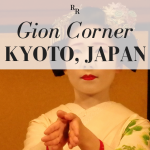
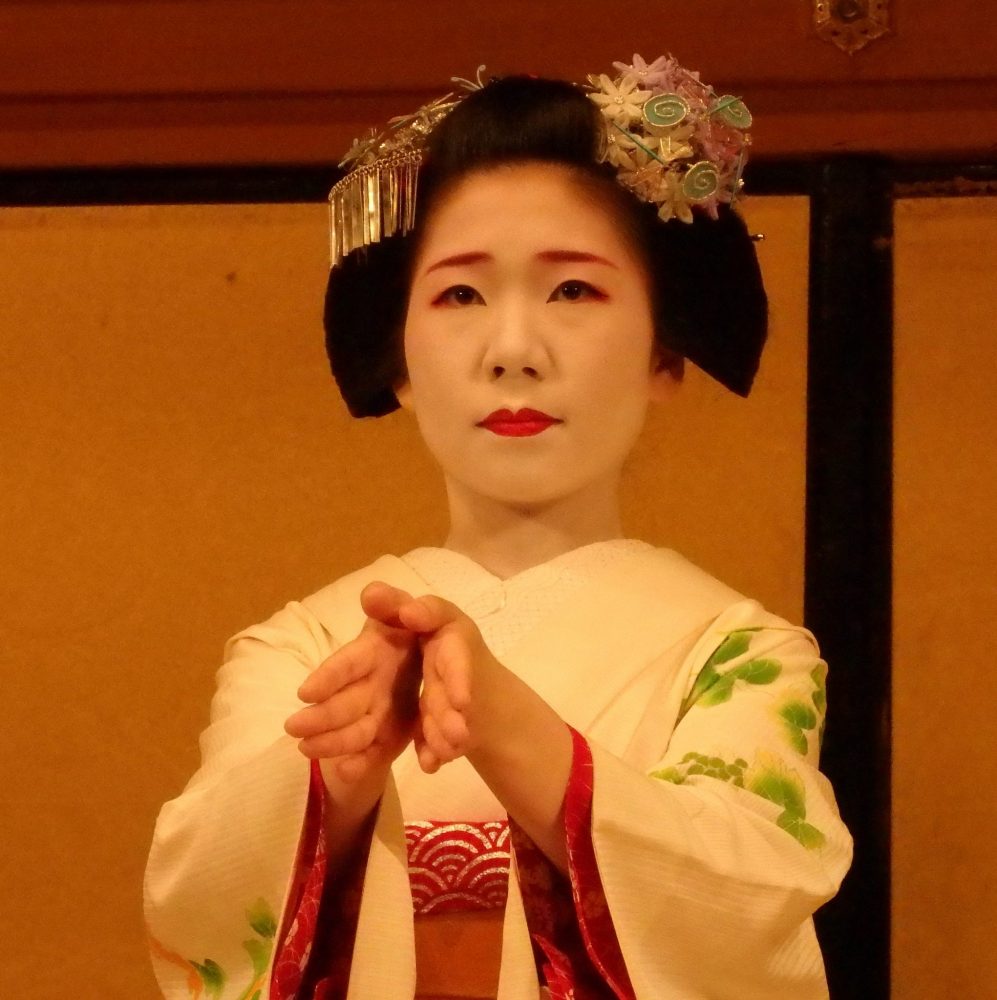
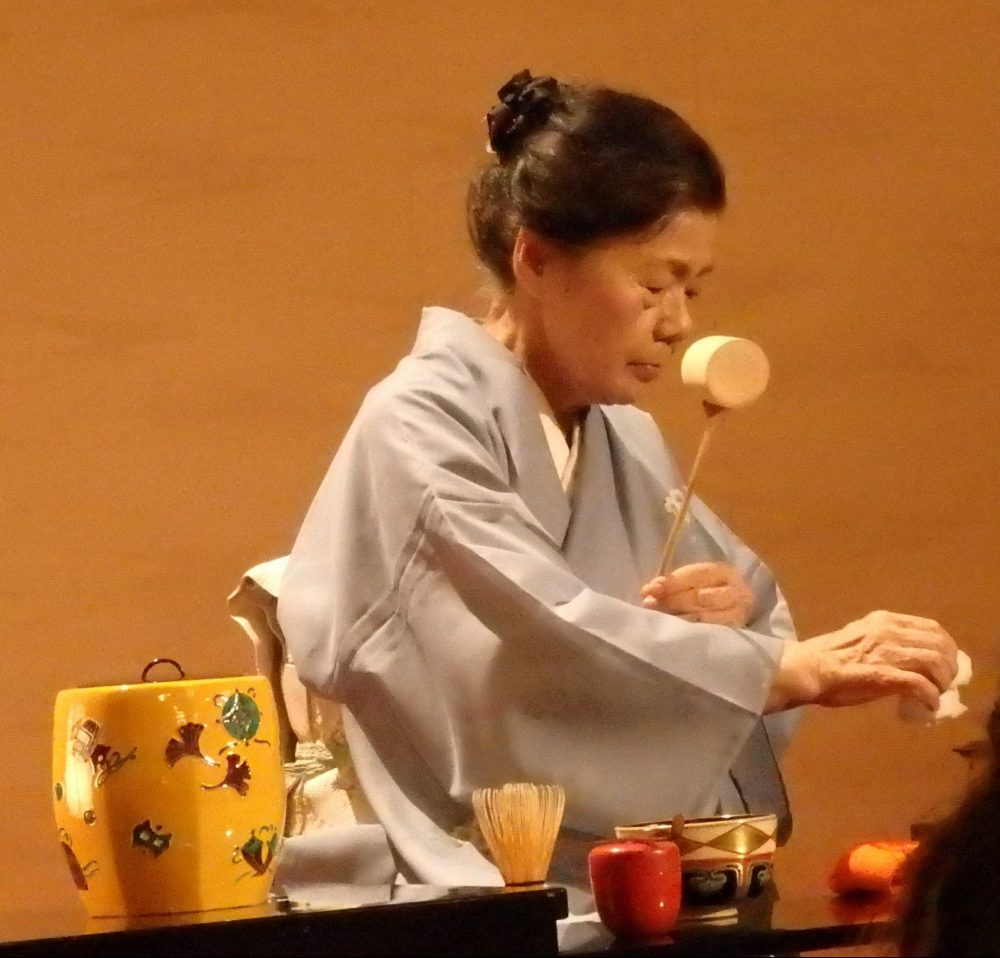
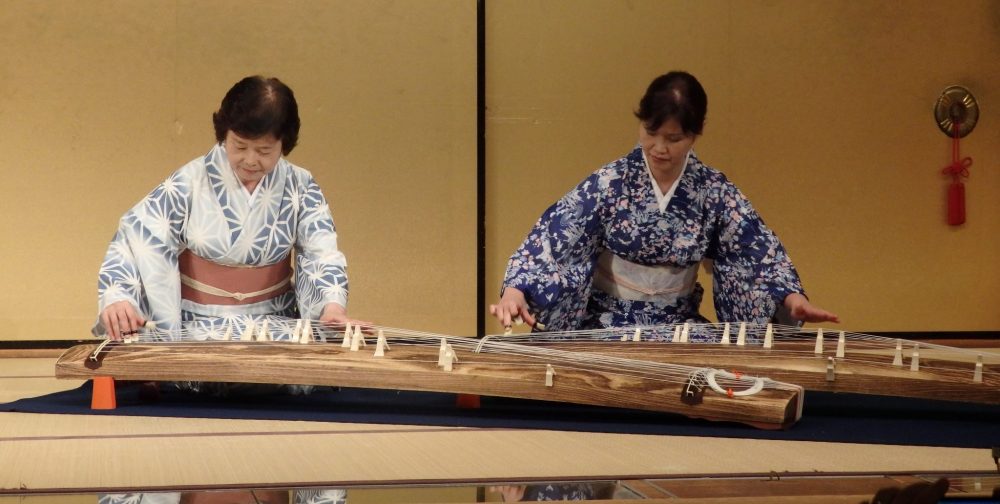

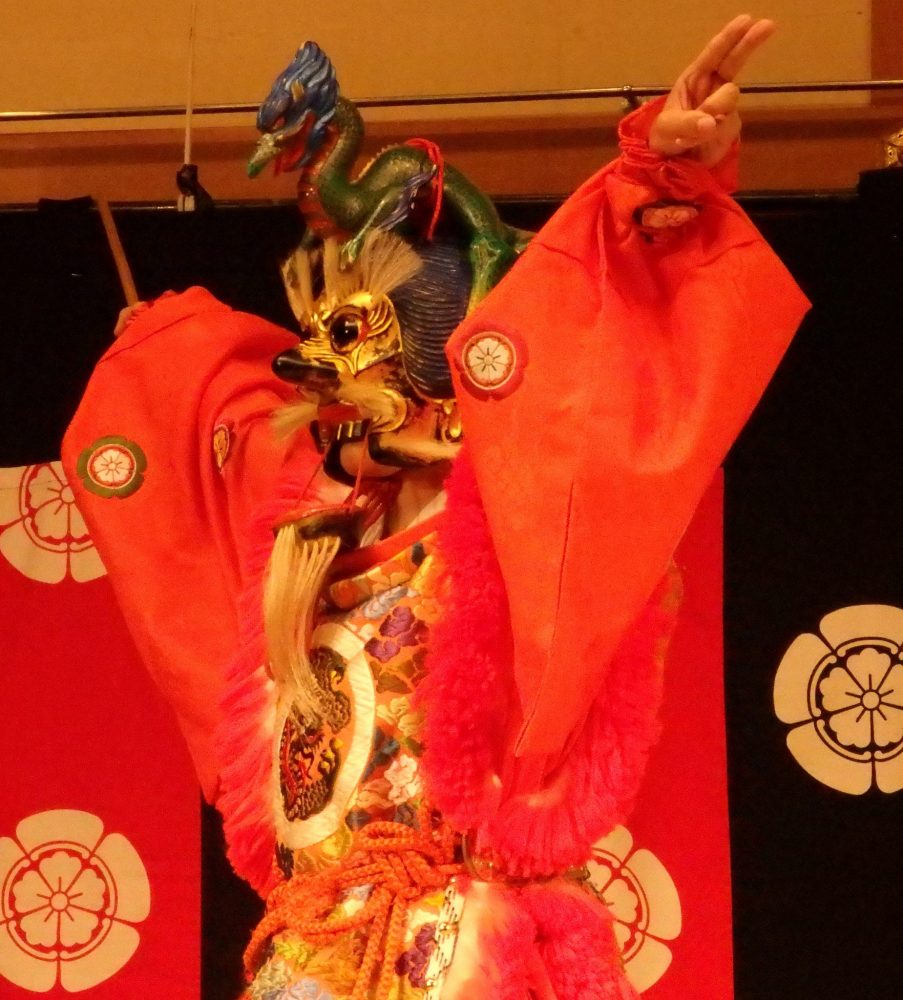

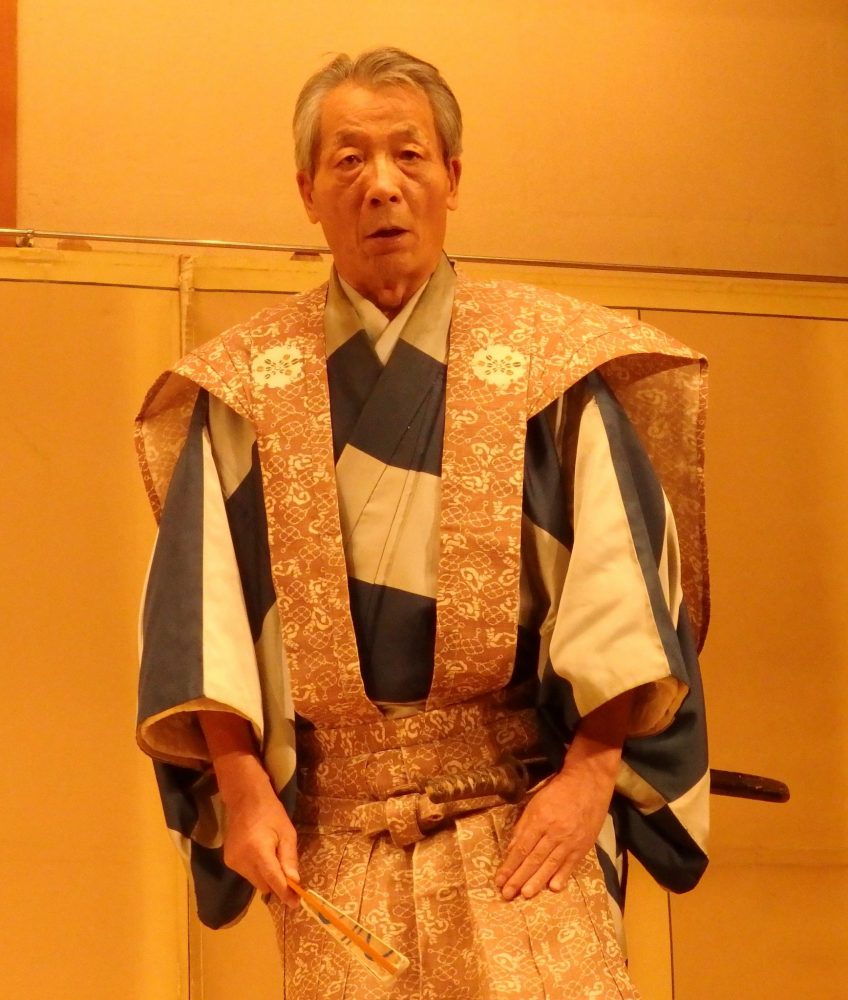
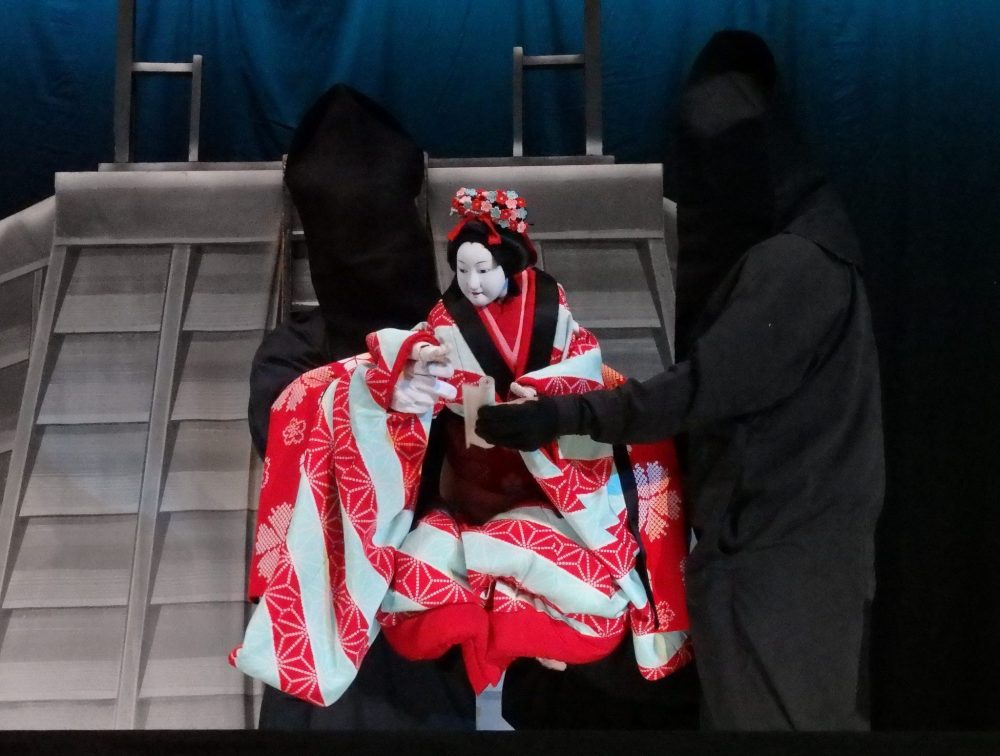


I did 2 years of Japanese flower arranging! I didn’t realise it was a spectator sport either. Suddenly I feel very sporty!! I’ve only ever seen the Tea Ceremony from the above list. I’m pretty sure it’s the same everywhere. At least this place you probably had proper Western-style seats. The one I saw you were kneeling on the tatami and all I could think was it was soooo slow and my knees were falling asleep. I missed most of the ceremony stressing over the pins and needles in my knees!
Oh dear, that could really spoil it! Yes, we had theater seats. The flower arranging, fortunately, was done very quickly and rather robotically, backed by some harp music. Dull, but mercifully short. As for the tea ceremony, that happened as we were filing in, but I would have liked to actually have some of the tea! I was one of the last to arrive, and two people had already been designated to receive the tea. I don’t know if they paid extra or were chosen.
Did you get to try the kaiseki meals in Kyoto? Kyoto is the birth place of the traditional Kaiseki style of cooking and Gion has the best Kaiseki food ever 😀
No, I didn’t. I was trying to keep to a very small budget so food tourism wasn’t my focus. I had some really tasty street food in Japan, but not in Gion, which is a tourist area and very expensive! Kaiseki would have been WAY outside my budget!
I was lucky to study some traditional dance when we had a visiting Japanese theater director in college. How fun to see a collection of arts presented together. No worries if there were slight adaptations and shortcuts: you were getting the essence of it!
I felt like I was getting something real, and not just put on for tourists. But it’s hard to judge on your own!
Well you certainly saw a lot of art forms in one place but I’m afraid I would have either fallen asleep or giggled during a few of them! A comic play in a different culture and language would be way too open to misinterpretation. On the plus side it seems as if it may have been fairly authentic as it doesn’t appear that they did anything to adapt it to non-Japanese audiences. I haven’t been to Japan so this is all quite curios to me..
There was certainly some laughter and I would guess some people got pretty sleepy, especially during the flower arranging. The comic play had enough slapstick elements in it to keep me entertained. As far as I could tell, the only adaptation they did was providing an English information leaflet and the introductions before each performance in English about that particular art form.
Well, it sounds as though you had an introduction to the authentic art forms…good in that a visitor gets an overview, less good that some of them simply cannot be understood without an interpreter. I would have had problems with the comedy bits for sure, without any guidance into what the performers were up to!
Well, if I had thought to take a look at the flyer they handed me as I went in, I would have had a bit of a clue!